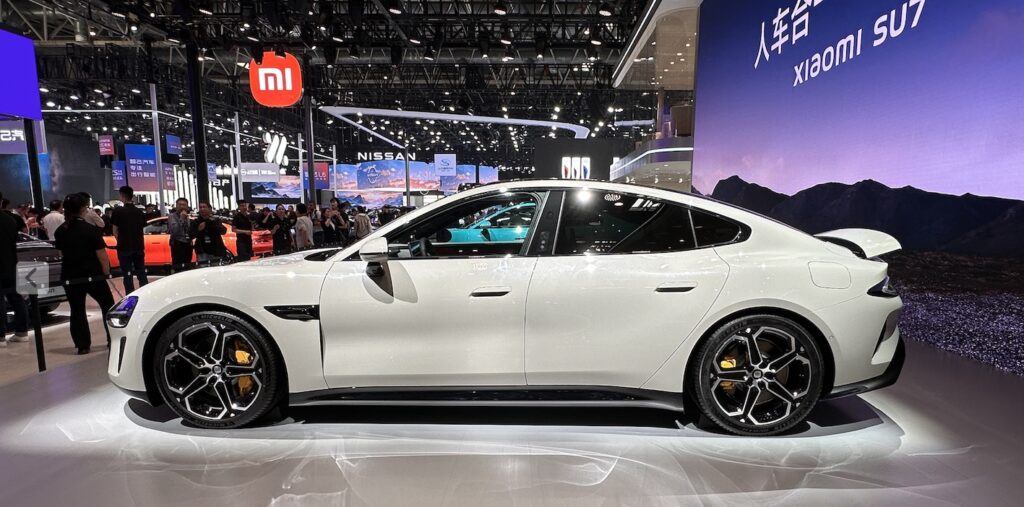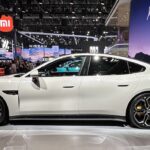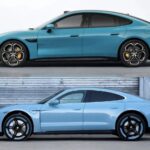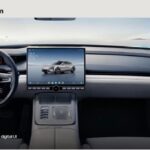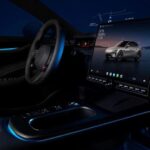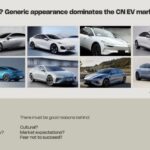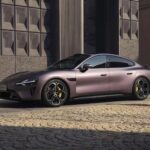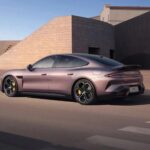目次
Xiami(シャオミ)SU7の評価
もし世界中のプロのカーデザイナーがシャオミSU7のデザインをひと言で評価するよう求められたら、それはおそらくこれまでになく満場一致なのものになるだろう。
2024年3月27日、BMW i8のデザイナーであり、BMW iブランドの元デザイン副社長であったブノワ・ヤコブ氏が、中国美術学院(CAA)で開催された「カーデザインの殿堂」レクチャーシリーズで「Beyond pre-conceptions(先入観を超えて)」と題したスピーチを行ない、そのなかでシャオミSU7に対する考えを語ったことがきっかけとなり、私と中国美術学院(CAA)のジェームズ・ホープ教授との間でディスカッションが行なわれた。
シャオミSU7はシャオミ初の自動車で、ポルシェ・タイカンとほとんど差別化できない製品だ。ブノワ・ヤコブは、感情的にシャオミSU7のデザインヘッドの誠実さを論評するのではなく、SU7の斬新なインテリアデザインと「大勢を占めている流れ」の背後にある文化的な問題に焦点を当てることを提案した。
※ブノワ・ヤコブ:アートセンターヨーロッパで学位を取得後1994年ルノー入社し、スポール・スピダー、コンセプトカー、ラグナIIシリーズの生産モデルを担当。4代目エスパスにも携わっている。2001年VWのアドバンススタジオへ。AUDIアドバンススタジオ設立に貢献した後2003年にBMWに移籍。X6, M1オマージュなど手がけた後2010年にBMW iデザインのディレクター。BMW i3, i8のデザイナー。その後BMWアドバンススタジオの責任者とBMWグループのデザイン副社長を務めた後、2016年に中国Bytonに移籍。 その後にNIOに移り現在は自身のスタジオを設立。
※ジェームズ・ホープ:1992年、カレッジ・フォー・クリエイティブ・スタディーズ(CCS)で自動車デザインの学位を取得。マスタングでチーフデザイナーを務めた後、フォード、ダイムラークライスラー、ゼネラルモーターズの米国3大自動車会社に勤務。2022年12月中国美術学院(CAA)デザイン学部の専任教授。CAA交通デザイン研究所所長。
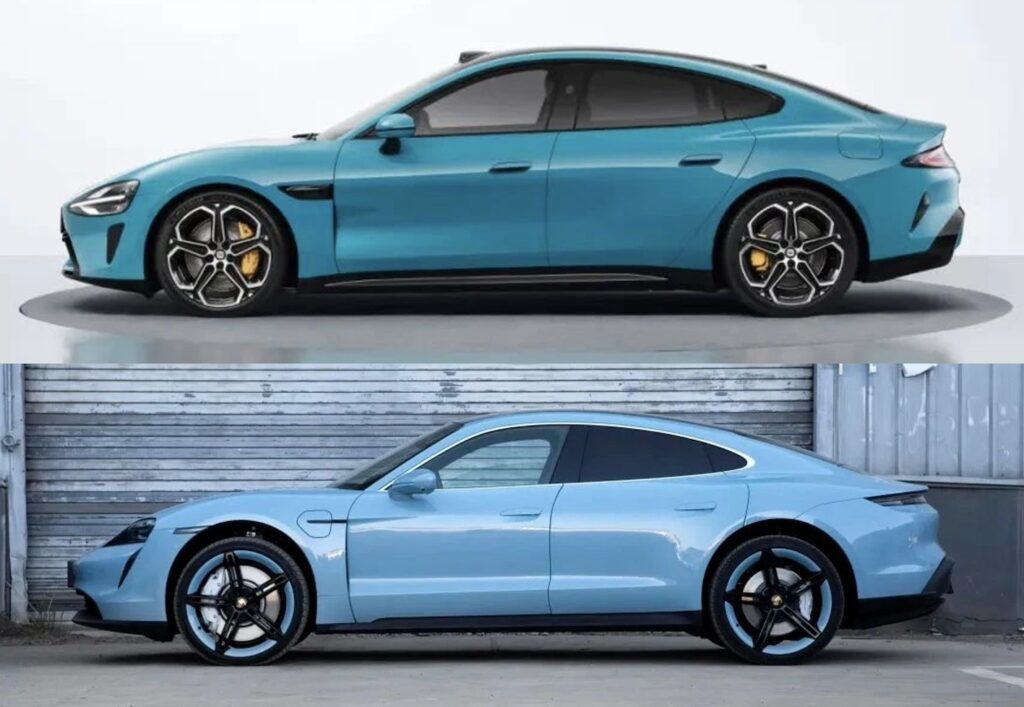
シャオミSU7の車室内のインタラクションは、その外観デザインよりも業界の注目に値するものだ。物理的なスイッチ類とデジタルスクリーンの機能のトレードオフはとても合理的で、UIデザインは世界クラスのモバイル端末の標準であり、しっかりとした考えに基づいて新装されたインテリアも非常に合理的である。同氏は、SU7の内装デザインはトップレベルだと考えている。
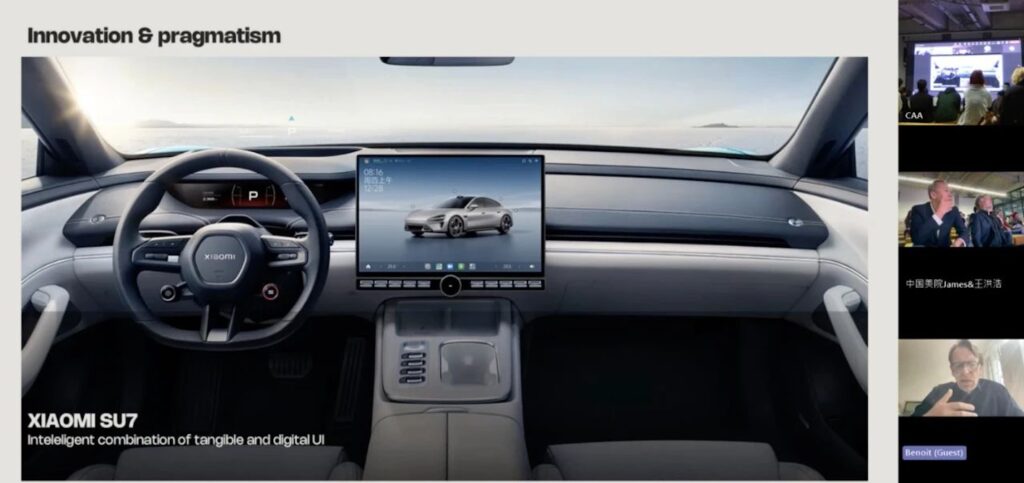
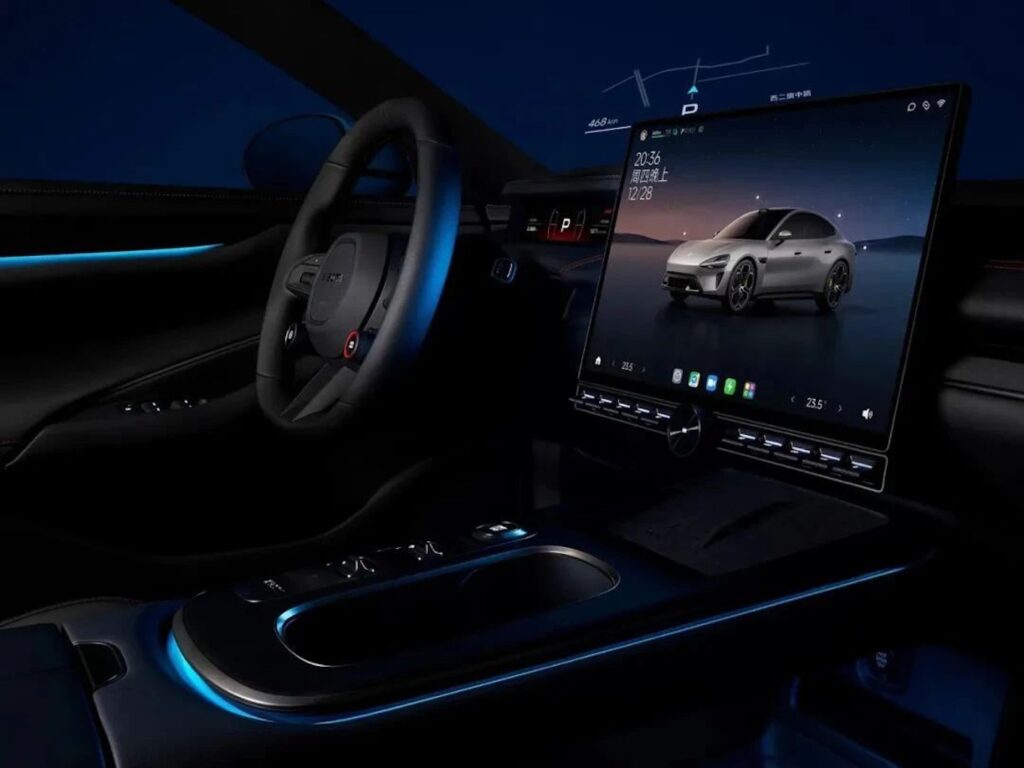
外観デザインに関して、ブノワ・ヤコブ氏は “主流(大勢を占めている流れ)”と “青写真(これからの流れ) “について語った。
中国には成功するためのテンプレート(定型、フォーマット)やパラダイム(定説)があるのかもしれない。
ヨーロッパでは受け入れられていないSU7の形状が、なぜ中国の消費者にとって大きな問題にならないのか?
また、なぜ中国の多くの自動車会社がポルシェ・タイカンやテスラが見せた流れを主観的に受け入れてしまい、そこから外れれば簡単に失敗すると考えているのだろうか?
それがひとりならばそれは好みの問題かもしれないが、皆が「主流」であるなら、それは文化の問題である。
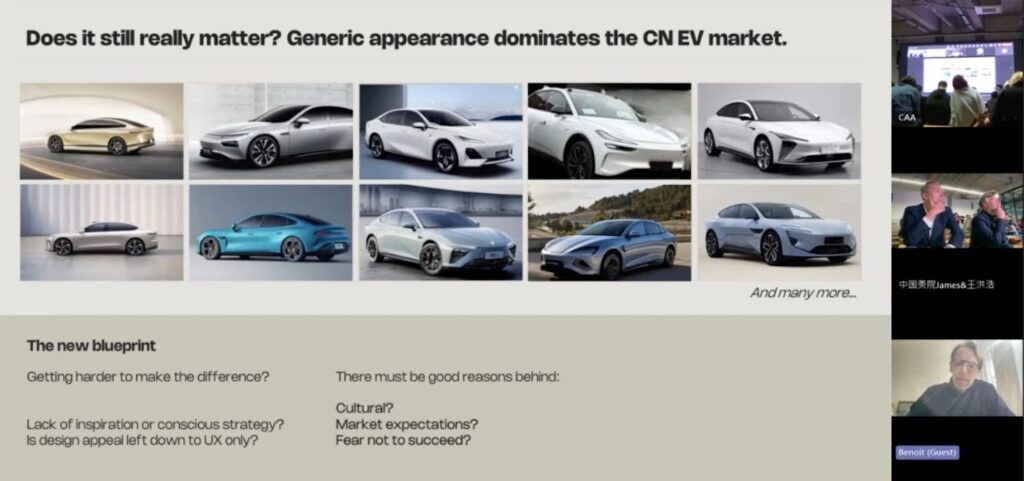
カルチャーに潜む潜在意識
私はジェームズ・ホープ教授と、中国における基礎教育と消費者の意思決定の関係について議論した。欧米諸国と比べると、中国には非常に均質な”成功のモデル”が存在する。私たちの小学校時代には、優秀な生徒の”モデル “があった。だから親たちは「誰が何を得意としているか」とたびたび発言する。私たちの人格形成の初期段階で、「メインストリーム」の道を歩み始めたごく一部の子供たちだけが成功することを黙認し、ほとんどの子供は成功しないことを黙認している。ほとんどの親が自分の子供を認めていないのだ。
私たちの文化は「失敗への恐れ」「努力を奨励する」ことを特徴としてはいるが、「成功のテンプレート」は明確に定義されている。そのため、競争心が強く、勤勉でストイックな文化が形成され、他者を超えようと躍起になるが、革新性には欠ける。
カルチャーの潜在意識は、テスラを超え、アップルを超え、ポルシェを超えたいと思っているが、テスラ、アップル、ポルシェのいずれが究極のソリューションなのかを考えることはめったにない。私たちは偉大な企業を作って行けるのだろうか?
この文化は、私たちが初めて学年順位を目にした小学校で確立された。この文化には、短期的には排除しがたいプラスとマイナスの両方の影響がある。私たちは標準化された答えを求め、合格ラインを引き、順位をつけたがる。その代わり私たちは疑問を投げかける質問をしたり、自由回答形式の質問をしたり、若者たちにさまざまな答えを探すように勧めたりすることはほとんどない。
これは今日でも自動車業界に当てはまることで、販売リストは週報、日報、時報に至るまで正確である。標準的な答えが「主流」を示し、ひとたび比較的明確な答えが出ると、誰もがそれを真似ることが求められる。このような主流への追従が、「それぞれの美しさ」の機会を奪っているのかもしれない。
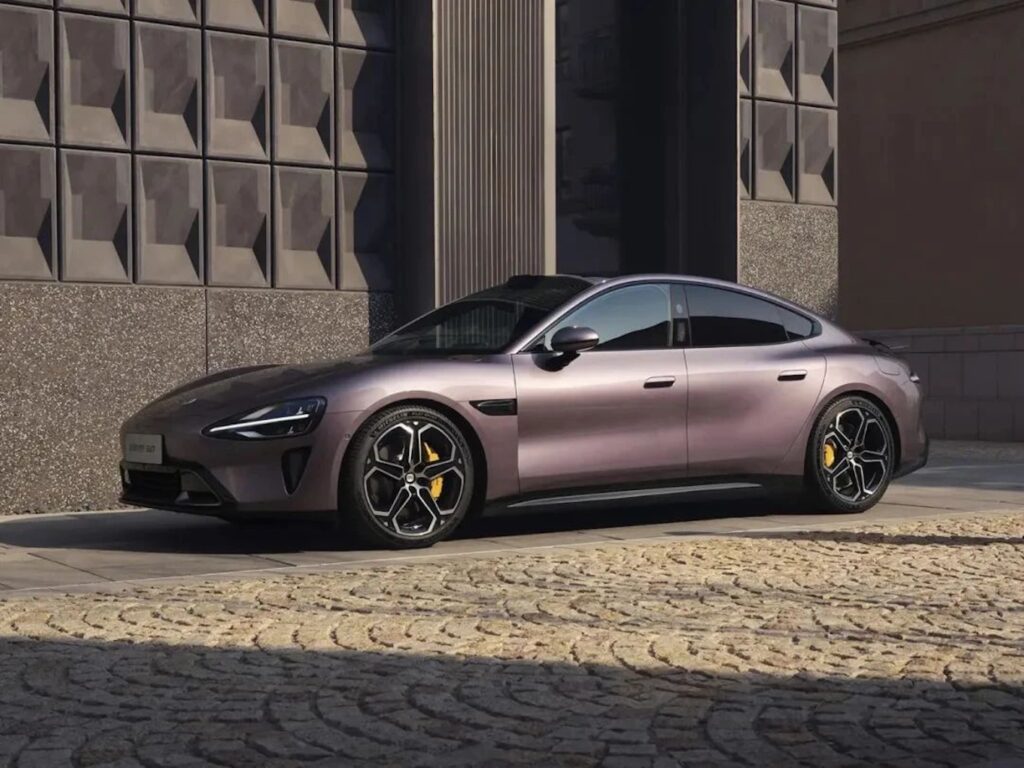

中国美術学院交通デザイン研究所の学長であるジェームズ・ホープ教授は、学生たちが「正解」を見つけることに慣れてしまわないよう、教育にいくつかの変化をもたらしている。この世に正解はなく、中国に “現地に合わせた対策を “という精神があるように、時間が違い、地理が違い、人が違い、デザインソリューションを生み出すリソースも違うのだから、同じ答えを持っていてはいけない。
待ち受ける厳しい戦い
私は生物進化の観点からシャオミSU7とその背後にある文化的な課題を理解している。同じ生態学的ニッチにおける生物間の競争は最も熾烈であり、競争の唯一の手段は効率である [一般的な中国語では「転」と呼ばれ、非常にシンプルで直接的な「転」である] 。 ある生態ニッチでは、生物の種が多すぎてはならない。そうであれば個体数を維持するために、すべての生物が栄養不足に直面することになる。
シャオミSU7は儲からない可能性が高く、シャオミSU7と同じ生態ニッチにある製品は、基本的な売上を維持するために、血みどろの競争を維持するために値下げを続けなければならない可能性が高い。勝者はいない!これは私たちが正面から向き合わなければならない問題であり、私たちデザイナーはこれを解決できるだろうか?
《What does the BMW i8 designer think about the Xiaomi SU7, which has been criticized in professional car design circle?》
Evaluation of Xiami SU7
If professional car designers around the world were asked to evaluate the design of the Xiaomi SU7 in one word, it would probably be the most unanimous ever.
On March 27, 2024, Mr. Benoit Jacob, designer of the BMW i8 and former design VP for the BMW i brand, gave a speech titled ”Beyond pre-conceptions“ during the ”Car Design Hall of Fame“ lecture series at the China Academy of Art (CAA), during which he talked about his thoughts on the Xiaomi SU7, which led to a discussion between me and Professor James Hope of CAA.
The Xiaomi SU7 is the first car product in Xiaomi’s history, and it‘s a product that has very little to distinguish it from the Porsche Taycan. Instead of emotionally comment the integrity of Xiaomi SU7 design head, Benoit Jacob suggested that we focus on the novel interior design of the SU7 and the cultural issues behind the ”mainstream form“.
※Benoît Jacob: After receiving his degree from Art Center Europe, he joined Renault in 1994 and was in charge of the Sport Spyder, concept car and Laguna II series production models. He also worked on the 4th generation Espace. In 2001, he joined VW’s Advance Studio and helped establish the AUDI Advance Studio before moving to BMW in 2003, where he worked on the X6, M1 Hommage, etc. In 2010, he became Director of BMW i-Design and designer of the BMW i3 and i8.He was also in charge of BMW Advance Studios and Vice President of BMW Group Design before moving to Byton in China in 2016. He then moved to NIO and now has his own studio.
※James Hope: Graduated from the College for Creative Studies (CCS) in 1992 with a degree in automotive design. After working as chief designer on the Mustang, he worked for three major U.S. car companies, Ford, DaimlerChrysler, and General Motors. 2022/12 Full Professor of Design at the China Academy of Art (CAA), Director of the CAA Transportation Design Institute.

Xiaomi SU7’s human-car interior interaction is more worthy of the industry‘s attention than its exterior design. The functional trade-off between physical buttons and digital screens is more reasonable, the UI design is a world-class mobile terminal standard, and the remodeling of the interior based on specific scenarios is also very reasonable. He believes that the interior design of SU7 is at the top level.


With regard to exterior design, Benoit Jacob talked about the ”Mainstream“ and the ”Blueprint“. Is there a template or paradigm for success in China? Why is the SU7’s shape, which is not accepted by public opinion in Europe, not a big problem for Chinese consumers? And why do so many car companies subjectively accept the paradigm set by the Porsche Taycan or Tesla and think it‘s easy to fail by stepping outside the box?
If one person is ”mainstream“ then it’s a matter of taste, if everyone is ”mainstream“ then it‘s a matter of culture.

The Subconscious Lurking in Culture
I discussed with Prof. James Hope the relationship between basic education and consumer decisions in China. Compared to western countries, China has a very homogenous model of success. In our primary school period, we have a “model” of outstanding students. That’s why parents often say, “Who’s kid is good at what” …… At the early stages of our character building, we tacitly accept that only a few children at the very beginning of the “mainstream” path are successful, and most people are not successful. A high percentage of our parents do not approve of their children.
Our culture is characterized by a “fear of failure” and “encouragement of hard work,” but the “template for success” is clearly defined. This has shaped our culture to be highly competitive, hard-working and stoic, and we are eager to exceed others but lacking in innovation.
The subconscious of the culture is that we want to exceed Tesla, exceed Apple, exceed Porsche, but we seldom think about whether Tesla, Apple, or Porsche is the ultimate solution. Can we go on to build other great companies?
This culture was established in primary school when we first saw grade rankings. It has both positive and negative effects that are hard to eliminate in the short term. We want to move toward standardized answers, we want to draw passing lines and rank order. Instead, we rarely ask questioning questions, ask open-ended questions, and encourage young people to look for different answers.
This is still true in the car industry today, where sales lists are even accurate to weekly, daily and hourly reports. Standard answers represent the mainstream, and once there is a relatively clear answer, everyone is expected to imitate it. Perhaps this following of the mainstream has robbed us of the opportunity for “the beauty of each”.


Professor James Hope, Dean of the Transportation Design Institute at the China Academy of Art, has made some changes in education to prevent his students from becoming accustomed to finding the “right” answers. There are no right answers in this world, and there is a spirit in China called “adjust measures to local conditions”. Time is different, geography is different, people are different, and you have different resources to create the design solutions, so we shouldn’t have the same answers.
The tough battle that awaits
I understand Xiaomi SU7 and the cultural controversy behind it from the perspective of biological evolution. The competition among organisms in the same ecological niche is the most fierce, and the only means of competition is efficiency – In popular Chinese, it is called “roll”, very simple and direct “roll”. There can’t be too many species of organisms in an ecological niche, otherwise they will all face insufficient nutrients to maintain the population size.
Xiaomi SU7 will most likely not make money, the high probability is that products in the same ecological niche as the xiaomi SU7 will have to continue to cut prices to maintain bloody competition to keep basic sales going. There is no winner! This is the problem we have to face head on, can we designers solve it?

